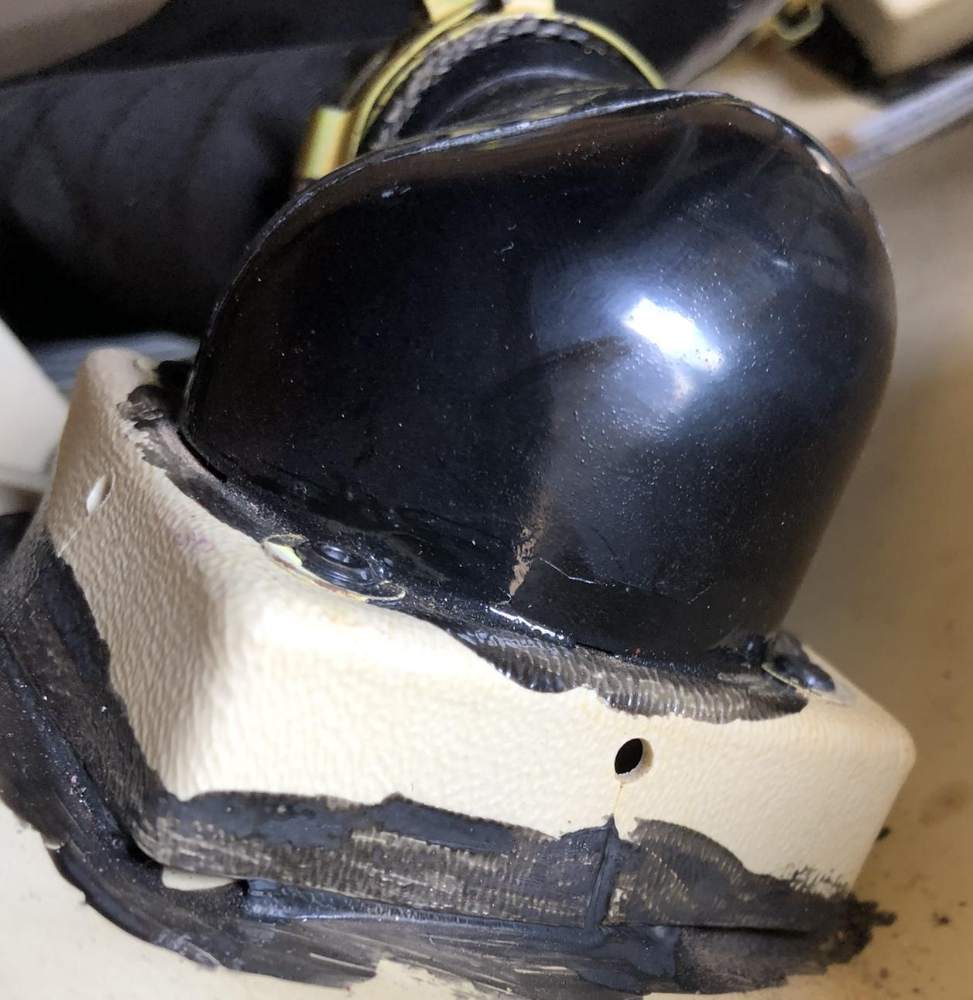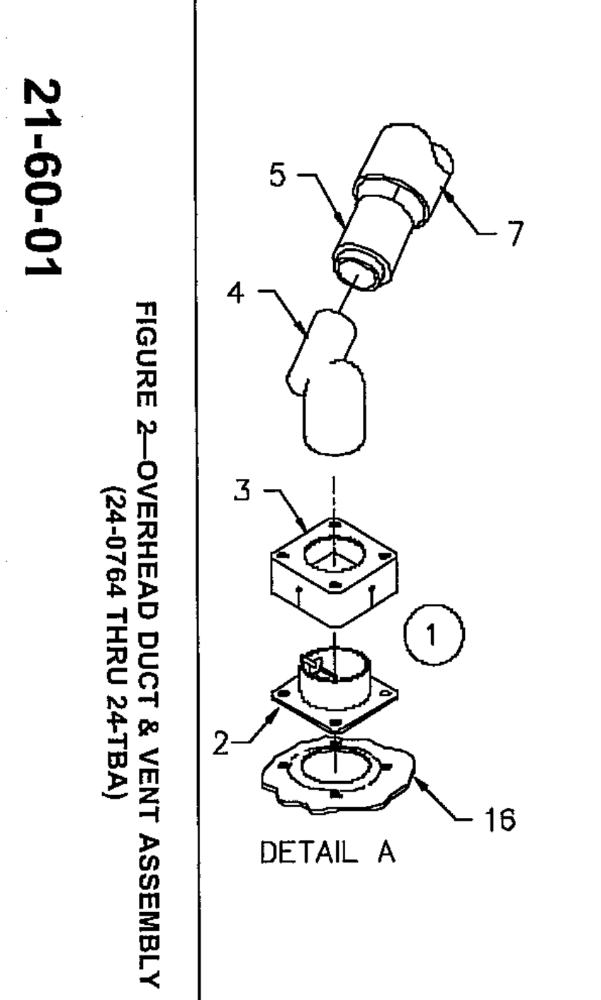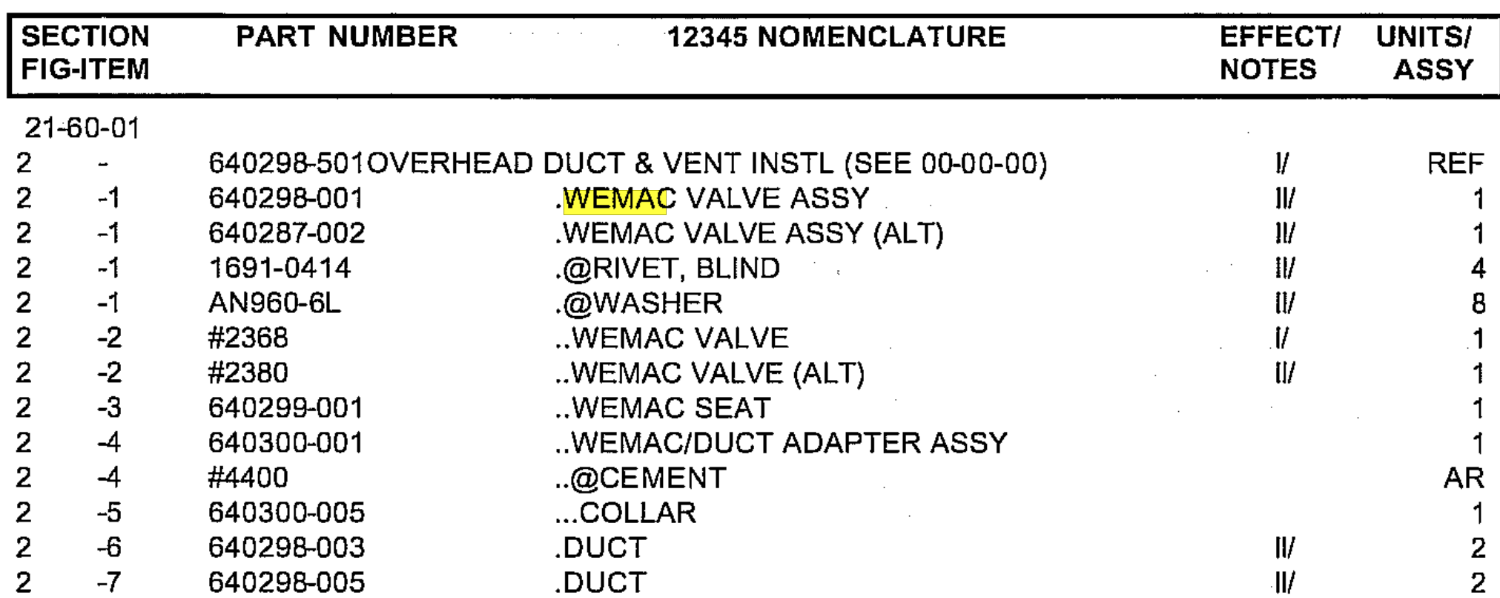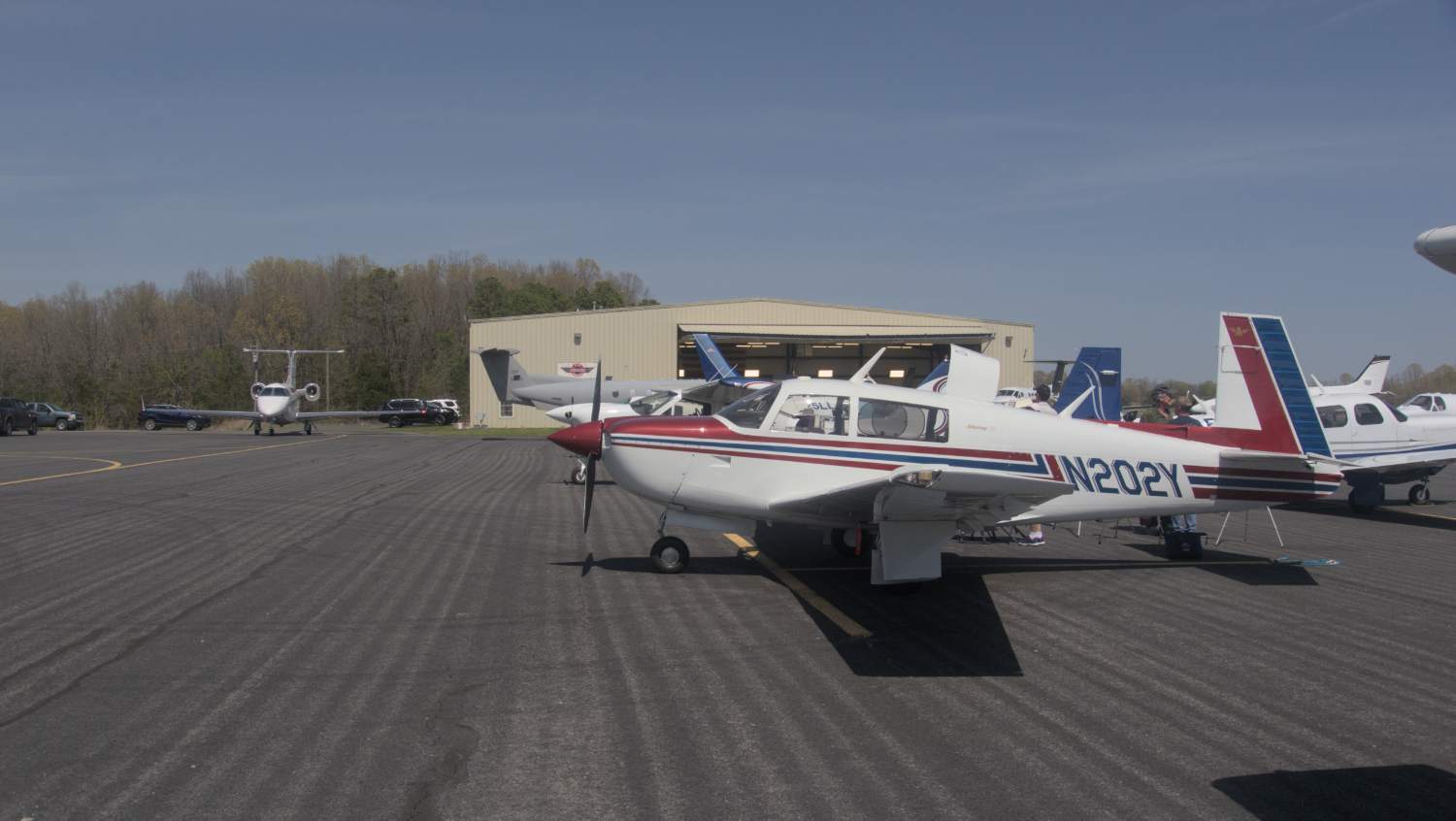-
Posts
3,257 -
Joined
-
Last visited
-
Days Won
8
Content Type
Profiles
Forums
Blogs
Gallery
Downloads
Events
Store
Everything posted by 0TreeLemur
-
Took my J up yesterday to test a "refurbished" (thanks @Jake@BevanAviation!!!) KC-192 autopilot computer. It performed flawlessly! After I landed and shutdown, I opened the cabin door in front of my hangar. The way I felt was confirmed by the license plate on my Tacoma! I had to memorialize the moment with a picture. A beautiful evening in Alabama!
- 177 replies
-
- 13
-

-
I don't see how lube fixes this problem. I wanted to post a video showing how if you lightly push on the knurled part, it moves up into the valve body. That seems like a broken problem, not a lube problem. Videos not allowed in posts, it seems.
-
The co-pilot's side overhead eyeball vent in our J is inop. When we bought the airplane, it kind of worked if you futzed with it in just the right way. This year it stopped working altogether. No amount of futzing with it causes it to open. Worse yet, the knurled ring assy. that one turns to open it will move into the valve body. I seems like the little arm that actuates the flap valve has failed or come out of its internal mount. This morning I removed the fasteners and trim holding the headliner assy. in place to see if I could work on it. To my disappointment, the valve body is pop riveted to the square receptacle with limited access. The square plastic receptacle seems glued to the headliner. Seems like it was not built to be serviced or replaced? I searched MS but didn't find a thread discussing this. It seems unlikely that I'm the first to have this problem. Can anyone point me to a thread describing the steps to fix this? We're getting close to high dew point season here in the south, and I'd like to get this fixed for my co-pilot's comfort! Thx. Fred
-
I'm in the same camp as @gacoon. Previously I flew a C with a six pack. When we purchased our J, it was equipped with an Aspen and INOP TC. I found that the TC readout on the Aspen is ok, but the VSI didn't suit me. Its dynamics were not as smooth as a steam gauge VSI, particularly in turbulence. Rather than replace the TC, I decided to replace it with an analog VSI. It helps me more effectively manage energy on approaches with less mental energy spent understanding vertical speed compared to the Aspen. Easier stabilized approaches.
-
The thread title is misleading. Since pure jets don't have props, I think that the correct term is "pod strike" when the engine enclosure hits the ground or something else.
-
I think Lasar sells them ($$). Alternatively, there are CAD files floating around and you can have one cut for you by a company that does contract water jet cutting. That's what I did years ago.
-

Alaska to Tasmania- 8425 miles nonstop in 250 hours!
0TreeLemur replied to 0TreeLemur's topic in Miscellaneous Aviation Talk
I know! If you look at his course on the USGS page, he was blown off course after departing Alaska, or was taking advantage of favorable winds! I read that the solar powered GPS and satellite transmitter they glued to its tail feathers weighed 5 grams. He carried that too! -
You can report it here: https://www.faa.gov/airports/airport_safety/wildlife The bird won't get a phone number to call.
-
Just when I was thinkin' that our petroleum powered flying machines are the pinnacle of aviation, this article gave me a reason to reconsider. It describes a satellite-logged flight of a 5-month old Bar-Tailed Godwit in Oct. 2022. https://www.scientificamerican.com/article/why-feathers-are-one-of-evolutions-cleverest-inventions The bird was tagged as a juvenile in Alaska. Flight path shown here: https://www.usgs.gov/centers/alaska-science-center/news/juvenile-bar-tailed-godwit-b6-sets-world-record Wow!
-
Back when we had our C model, during an owner-assisted annual where I took off all the underwing inspection plates, I found a nest and a corpse in that vicinity inside the wing with a scope. Also true that once they get in the wing, they have free run of the aircraft. I've found no sign that they've taken up residence in my plane. I think it was my fault and hopefully a one-off. Like @LANCECASPER, while I did not leave a cheese-n-crackers pack in my airplane, I left a single used honey-lemon flavored Rogue pouch. Apparently that was irresistible . The little vandal left the wrapper on the co-pilot's seat in shreds, with a few droppings but luckily did not chew on the seat or anything else that I saw.
-
The setup in my C involved a Mid-continent GI-106A connected to the GNS430W, and a BK KI-209 connected to the KX-155 nav/com. The analog outputs from those two indicators were connected to the Accutrak II as NAV1 and NAV2. I almost never used the VOR nav functions. I'd say you can get by with just the GI-106A connected to the Accutrak.
-
I opened up the tail and looked around today. No signs of entry, forced or otherwise. As per @FlyingDude, I'm guessing up the nose gear and into the belly by way of some magical acrobatics.
-
How do they get in through the tail? It's in a hangar, not tied down.
-
In the category of "it's always something...." Yesterday I went to the hangar. When I opened the door to our J I was greeted by a surprise on the right-front seat. A little mess of paper shreds and mouse poop. It seems the last time I flew I left something behind that a mouse thought was tasty. Both the cabin and baggage doors were closed and locked. Cowl flaps were closed. This happened since Monday. I've been in this hangar for six years, first time I've seen mouse turds in the cabin of my airplane. Got on a creeper and inspected the rodent socks in the main wheel wells. No deficiencies noted. Ain't nothing bigger than an ant getting in that way. Crept under the nose gear wheel well. There are some openings but they don't seem a likely entry pathway because they would be awfully difficult for a mouse to get to unless they jumped. Anybody have an idea how they entered the cabin? I removed everything and didn't see widespread signs of occupancy. I don't think that they've moved in (yet). I've seen that some folks put down rodent rings around the three wheels to impede entry. I might start doing that. Can anyone recommend a source for those? Thx. Fred
-

M20C down near Longmont, Colorado
0TreeLemur replied to Mooney in Oz's topic in Mooney Safety & Accident Discussion
A link to another thread discussing this very issue. Highly recommend folks read what @whiskytango wrote. -
Several items that I've sold or wanted to buy in the last year have attract scammers. I love them. I like to mess with them. Sadly my "WTB Turbo Encabulator" ad didn't generate any offers. "My dad has one, send money to prince@nigeria.net"
-

M20C down near Longmont, Colorado
0TreeLemur replied to Mooney in Oz's topic in Mooney Safety & Accident Discussion
Most excellent outcome. I've driven that stretch of highway many times. At about 3:00 on a Sunday afternoon it should not be too crowded. However, in the news video you can see an overhead power line across the road right where the airplane is parked. As @whiskytango's experience has shown us, they can cause an easy emergency landing to become a difficult emergency landing. There are lots of good fields to land in around there. Many. -
I fly 1000 mile cross-countries several times a year. At first did it all in my C by hand. Arrived at my destination too tired. Then like you I gathered the parts and installed an Accutrak II first in our C. It was a fantastic magenta line follower. But, after I finished my IR and started asking for diversions around buildups I started to covet the Accuflite. Installed that my nav problems were all solved. Life was so good, except for altitude hold. Next I pieced together the parts for the Brittain AH system, and with the help of some resident knowledge here, got it working. Ended up with a full two-axis autopilot, all done by tubing and rubber bands! Now I fly a J with a "modern" autopilot- the 1980's vintage Bendix-King KFC-150. Honestly, the Brittain wing leveler does a better job than the BK at keeping the wings level in turbulence because it is more responsive and smoother. The dynamics of the Brittain wing leveler are just unbeatable it seems. The altitude hold on the BK system is very aggressive at maintaining altitude within 20 ft. The Brittain altitude hold had more like a +/- 60 ft variance, and provided a much smoother ride. In mountain wave turbulence I just have to turn the BK altitude hold off or it will make my passengers (or me) puke. The Brittain altitude hold, while responsive, seems a better match for the flight dynamics of a small airplane. The Accutrak II would sometimes wander a bit. Seemed random, but more likely to happen after several hours of a long trip. The Accuflite of course depends on the rate of gyro precession on your DG- that would make long distance flights without the Accutrak a little zig-zaggy. If you can find all the parts, I'd recommend putting in both. You can use the Accuflite to help in maneuvering (e.g. holds) too if you need to look at an approach plate or weather data on your iPad while shooting an approach. It's all great for workload reduction.
-

KFC200 Trim Switch Needed - And Cost Reality Check
0TreeLemur replied to PeteMc's topic in General Mooney Talk
I got the following info- From Honeywell data sheet: Catalog Listing 21SX39-T (MS24547-1) Mil Spec.: MIL-PRF-8805 Max. Op. Temp: 82°C [180°F] Electrical data and UL Codes: 7 A Note: it says that Prefix 21SX is the same as a Prefix 1SX with MIL-approvals They are a single-pole, double throw switch. Normally, pins 1 and 3 are connected together and pin 2 is open. When depressed, pins 1 and 2 are connected and pin 3 is open. -
I've got a business trip coming up in late May in SLC. I see a good opportunity for a nice long XC in my Mooney with a stop to see my son in Los Alamos. I'm looking for a recommendation of a good field to land and tie down for four days from someone with experience in SLC.
-

SOLD: Massive spark plug and gapping tools
0TreeLemur posted a topic in Avionics / Parts Classifieds
When I owned a M20C it used massive plugs. I carried around a spare plug and gapping tools in my tool bag. Since I sold the C and bought a J that uses fine-wire plugs, I no longer need them. It's all unused. I'm asking $60 for the lot, and I'll pay shipping to CONUS addresses via UPS ground. That's essentially half price for my MS friends. If OCONUS, you pay shipping. If you want these send me a DM. I'm not interested in splitting it up- all or nothing. Thx. -Fred -
^^ This is what we use too. Except we don't have those exotic tiger stripes!
-
The gathering on April 8 for eclipse viewing at 42A (Melbourne, Arkansas). The crew of that large grey military airplane (single engine turboprop) landed just before the totality started. They landed long and filled the air with tire smoke as the pilot slammed on the brakes with the end of the runway rushing towards him. I've never before seen an airplane fishtail like that! There were four Mooneys in attendance, including @Pasturepilot and family!
-
I had the cowl plugs in place. And while I didn't check the wheel wells, I suspect when when the gear came down arriving home that probably cleaned out any nest material in there. I'll give it a look though. The spot next to my tie down had a huge amount of nest material on the tarmac where the nose of another airplane once was. Obviously someone didn't put in their cowl plugs and got nested. I learned from their misfortune.
-

Heard emergency on radio 4/4/24
0TreeLemur replied to 0TreeLemur's topic in Mooney Safety & Accident Discussion
Thanks a bunch for this! Gave me chills to listen to it again. At the time it just seemed surreal. The kid (ok, I'm obviously older than him so I can call him that) flying the Lancair did a fantastic job of staying calm! I really appreciate @whiskytango's perspective here as someone who has lived this experience.









